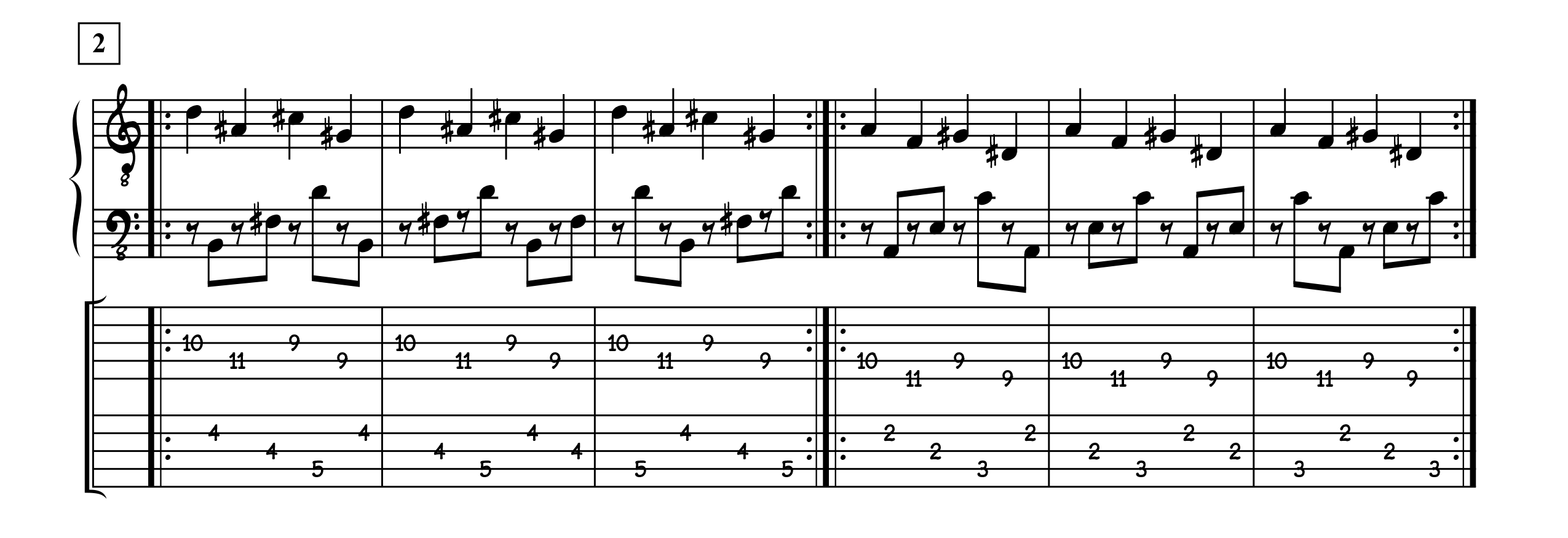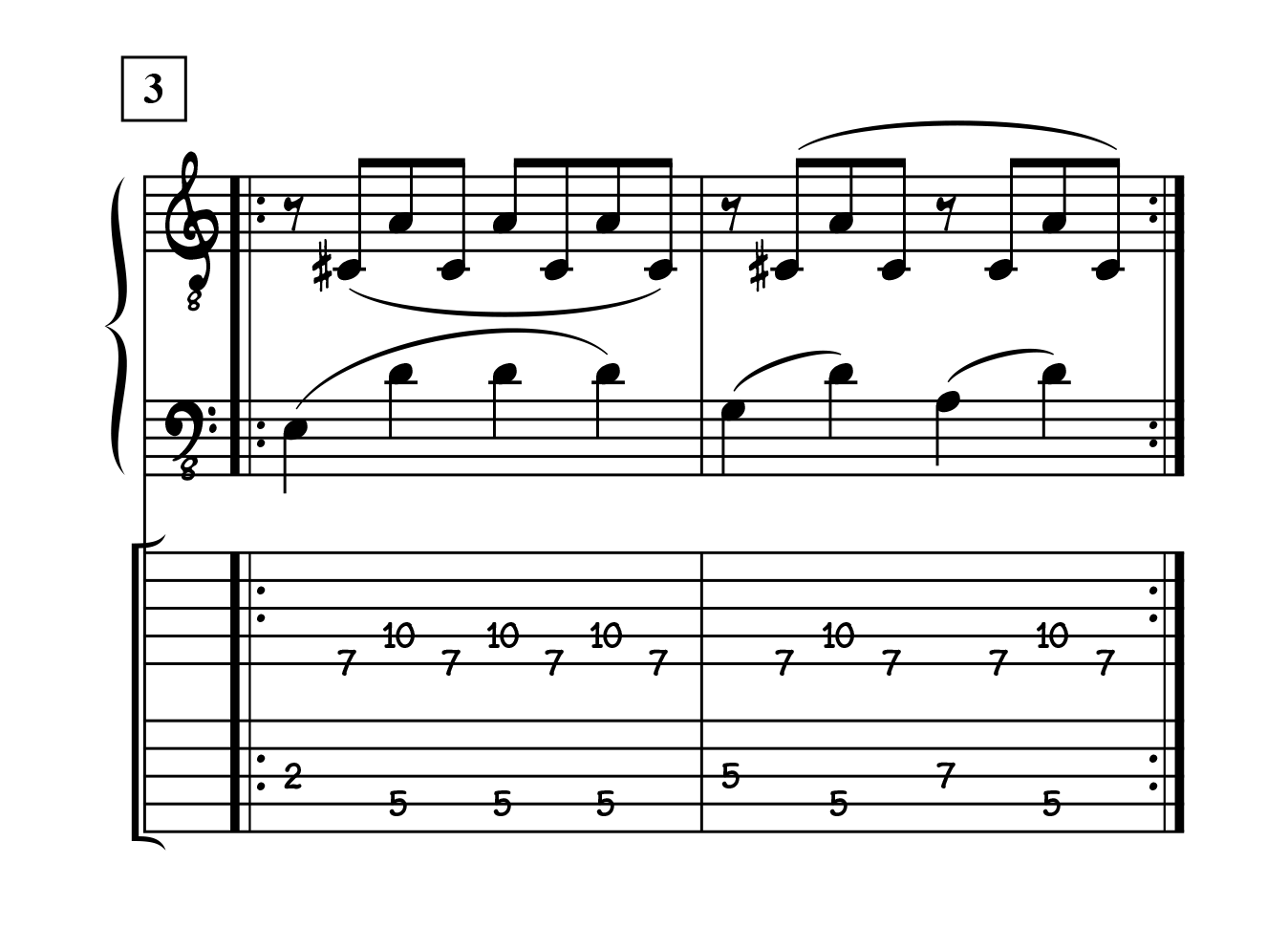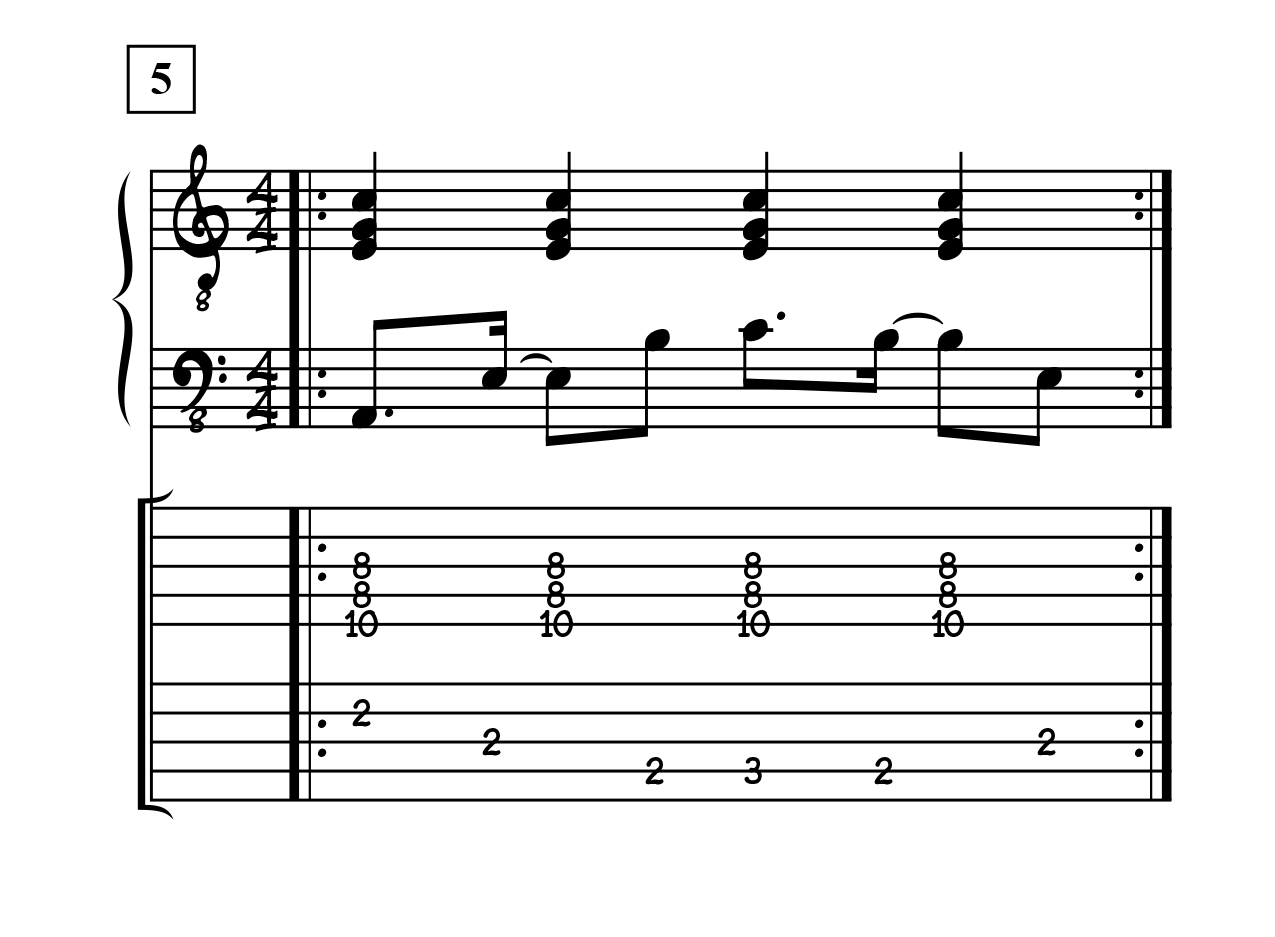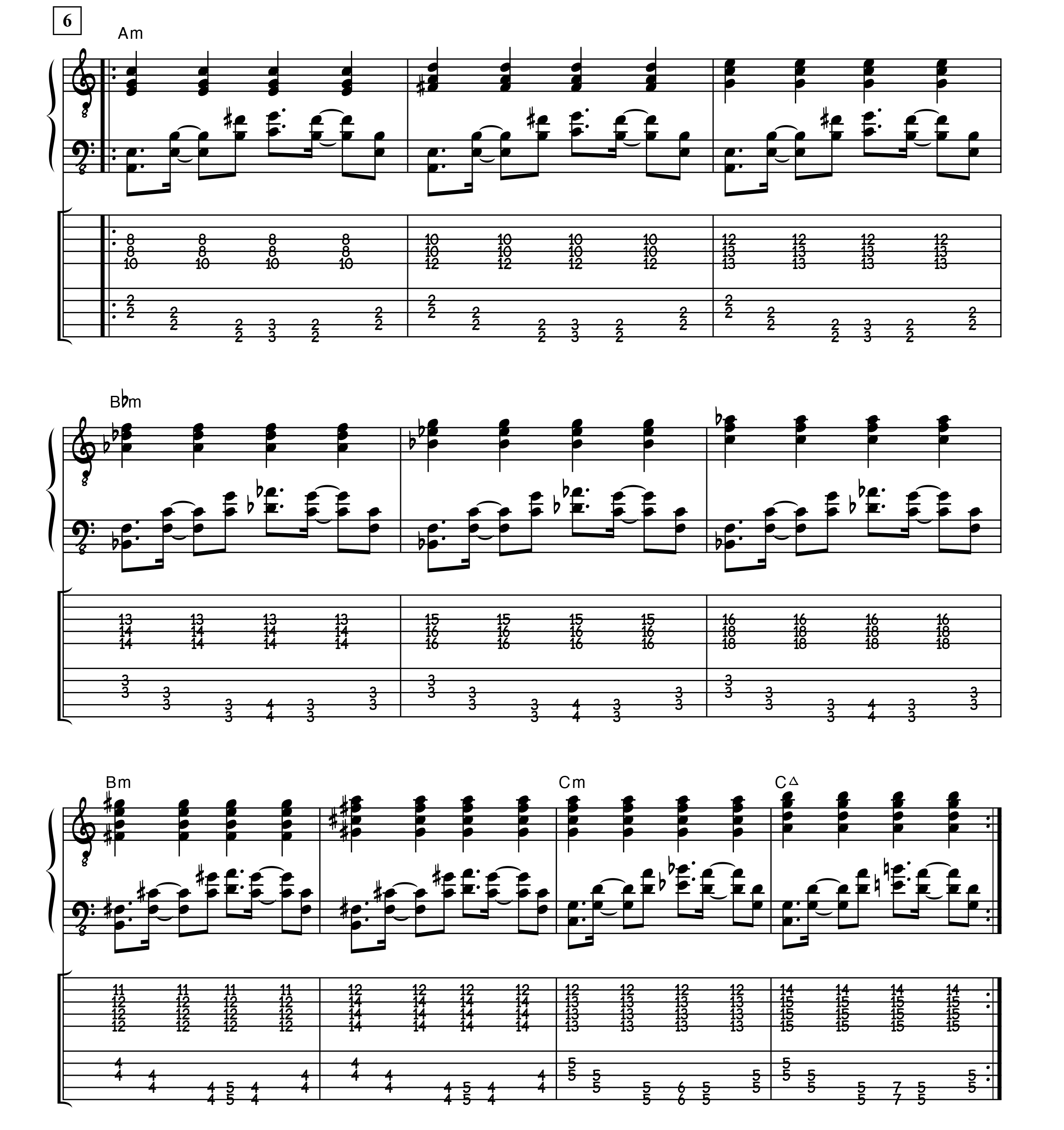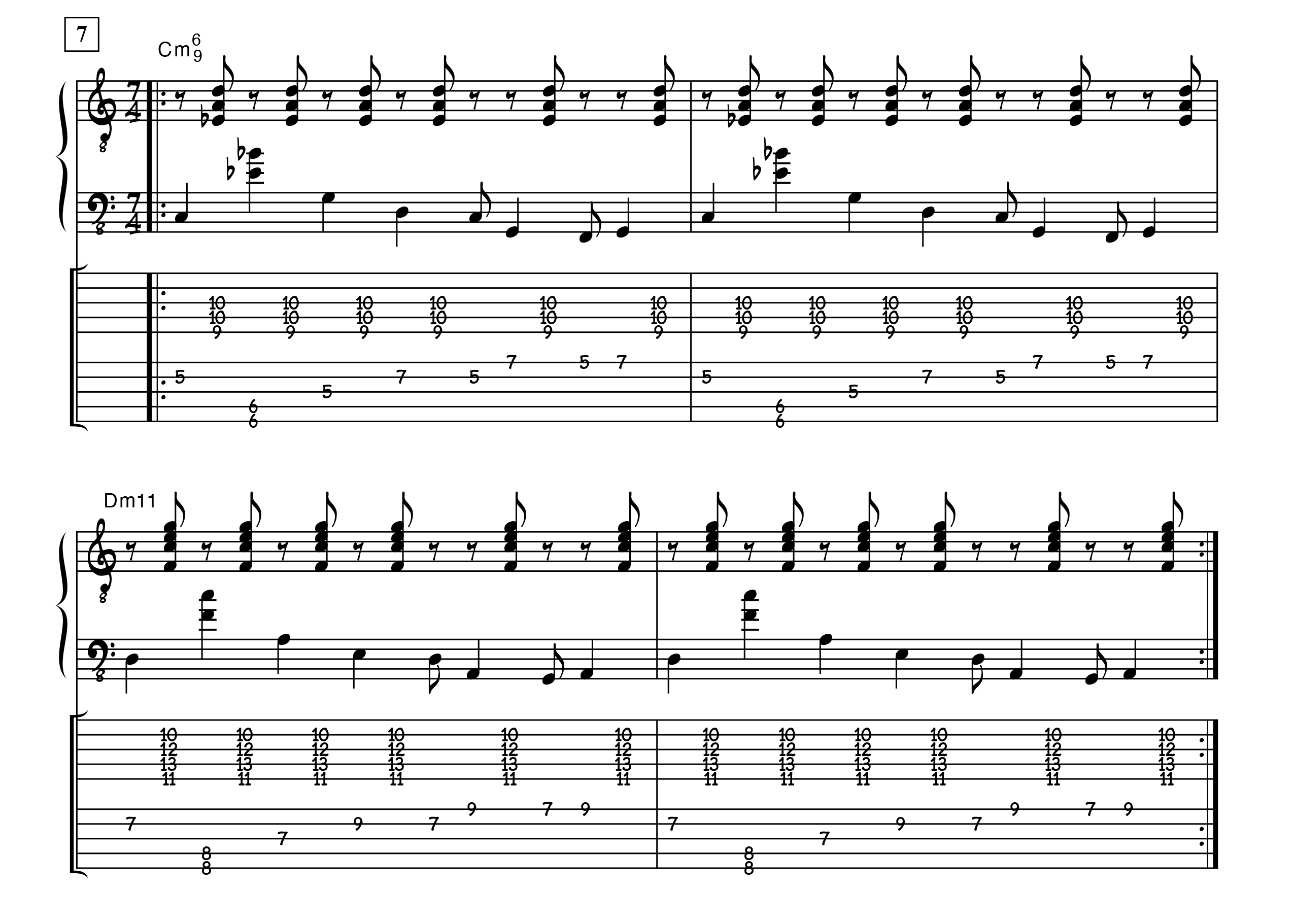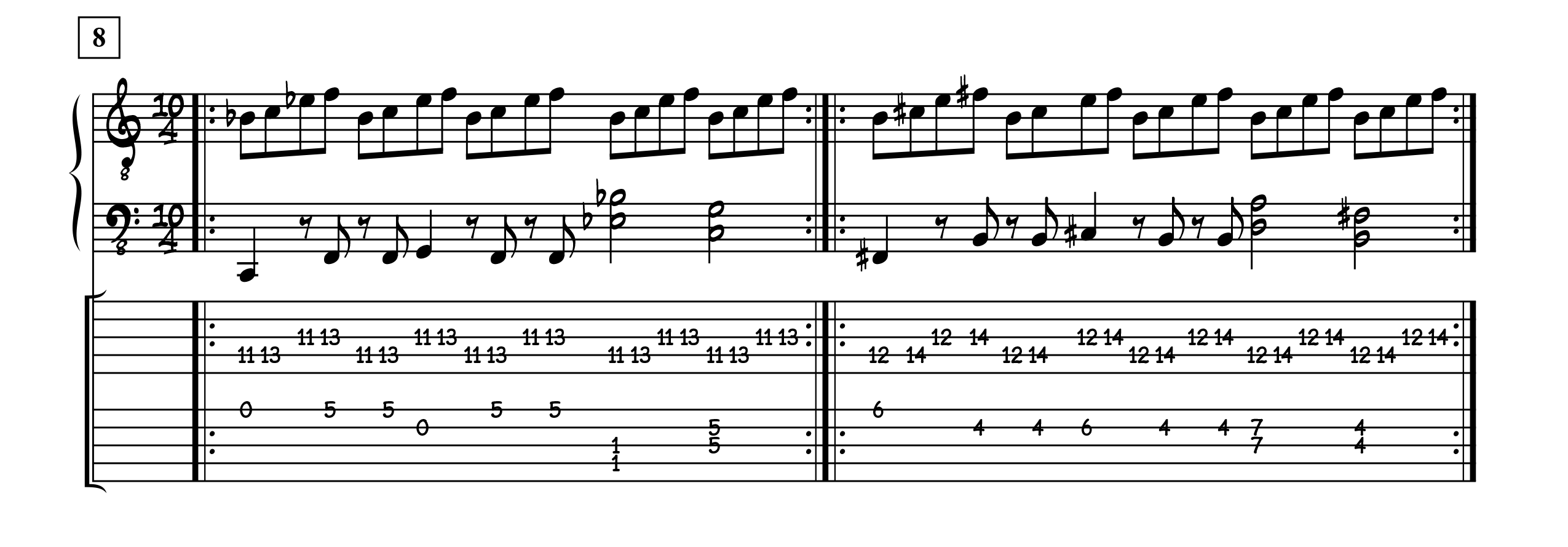Stick Lessons, standard tuning
I started fooling around on the Chapman Stick around 1997. The first year or so I didn’t know how to hold it, tune it, or amplify it. Then a friend showed me the secrets of Standard Tuning for a 10-string Chapman Stick: fourths on the treble side and fifths on the bass side – and, oh boy, the Stick I had bought used was a left handed instrument. Until about late 2001 I tried to cope with Standard Tuning. I liked a lot of the things the fifths on the bass strings made possible (fifth and fourth based bass lines, huge open-tenth chords, wide range); but a lot of the things I liked to be able to play and had been practicing for my first few years were extremely hard (walking basslines, most linear scale-based music, closed chord voicings). Then I thought I’d try a fourth tuning on the bass side – I took off the low C string, made the G string the lowest and added fourths on top of that, really quite arbitrary. I haven’t looked back since. For what I wanted to do that tuning worked perfect and felt right at home because chord voicings and scales are now the same on both sides (well, mirrored). This switch also finally gave me an idea of how I wanted to use the Stick in a band situation – like a piano where I am able to play chords or counter lines on one side while playing a melody on the other. Thus, the following lessons are divided into two groups. Also, Standard Tuning lessons are standard notation plus tab but for Peter’s Tuning I left out the tab.
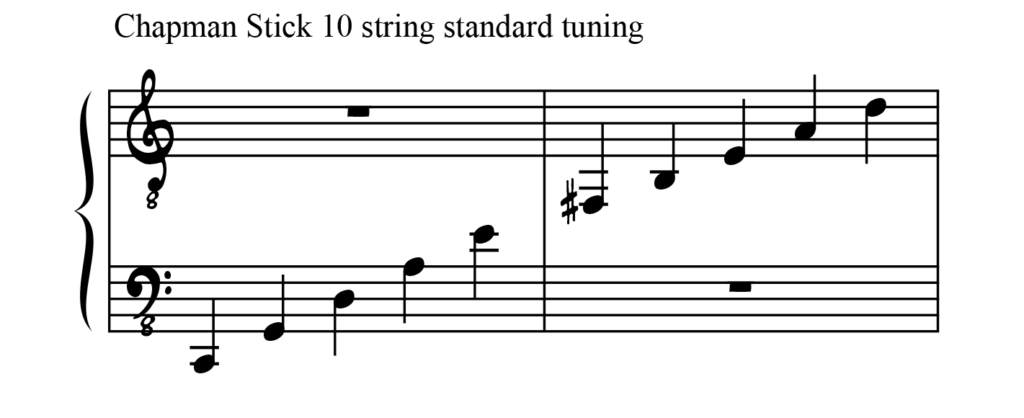
Lessons maybe the wrong term for this material. I feel that I am not on a level yet where I could teach anybody to play a Chapman Stick. But every time I pick up my Chapman Stick neat little sequences and sounds pop out. I started writing some of them down and thought I’d share them. The tab notation is for 10 string standard tuning.
- Stick Lesson 1
- Stick Lesson 2
- Stick Lesson 3
- Stick Lesson 4
- Stick Lesson 5
- Stick Lesson 6
- Stick Lesson 7
- Stick Lesson 8
- Stick Lessons
-
Stick Lesson 1

To me the hardest thing seems to be to get my two hands working independently yet together. Most patterns I come up with fall into the modal-stay-the-same category. Meaning you put the fingers on the right notes and nothing really changes. This example switches between two tonalities and on top of it runs a four-note…
-
Stick Lesson 4
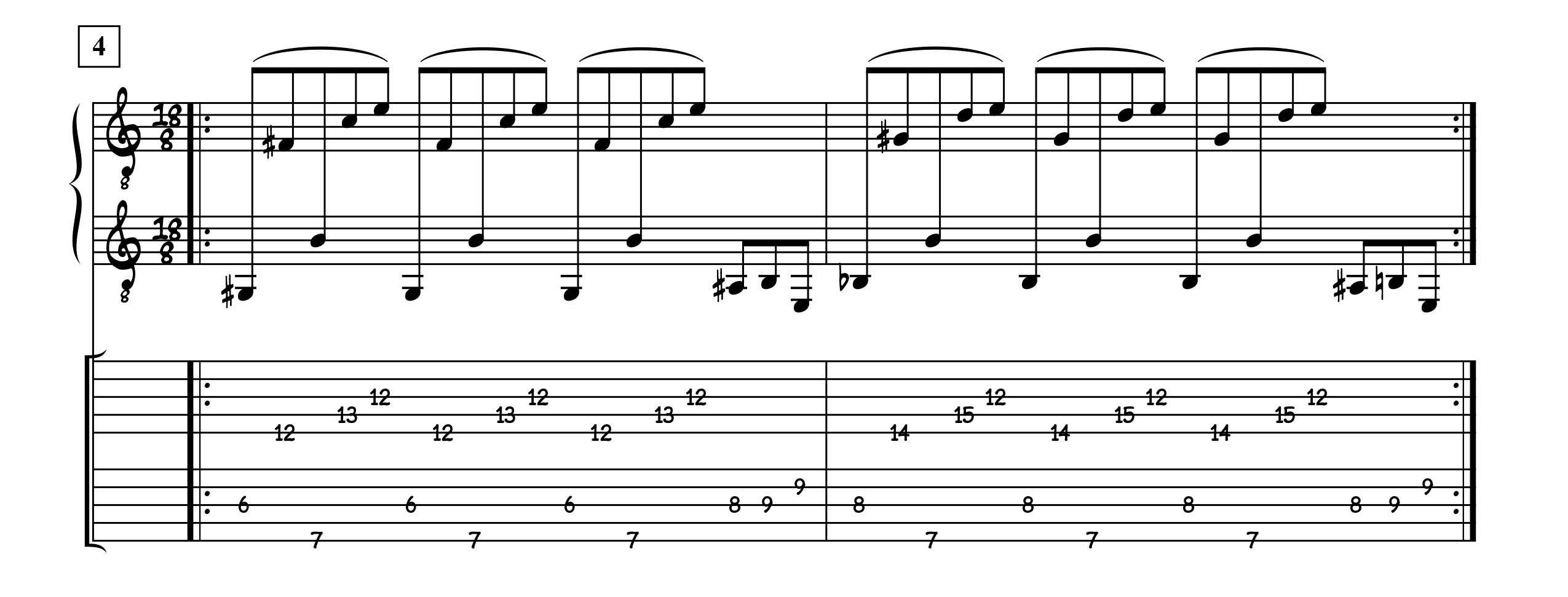
John McLaughlin has always been one of my favourite musicians. Some of his cross picking vamps are excellent to challenge your left hand/right hand coordination. This example is from his tune “Birds Of Fire”, from the album “Birds Of Fire”. He uses plenty of open strings. On top you see the original guitar line. The Chapman…
-
Stick Lessons
Stick Lessons, standard tuning I started fooling around on the Chapman Stick around 1997. The first year or so I didn’t know how to hold it, tune it, or amplify it. Then a friend showed me the secrets of Standard Tuning for a 10-string Chapman Stick: fourths on the treble side and fifths on the bass side –…


